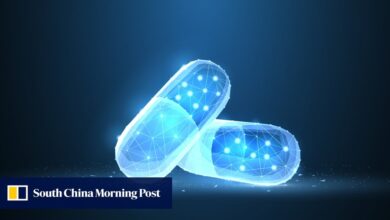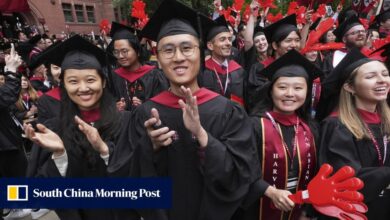Why Some Give More Than Others – World Pakistan


Researchers at the Netherlands Institute for Neuroscience investigated the neural basis of altruism by studying individuals who physically feel others’ pain, known as mirror-pain synaesthetes. Their study found that these individuals are more inclined to make sacrifices to help others, driven by heightened activity in brain areas involved in sensory experiences.
Researchers from the Social Brain Lab at the Netherlands Institute for Neuroscience have used a unique setup to investigate the neural mechanisms behind a universal dilemma: choosing whether to help someone else, even at a personal cost.
We often have opportunities to give up something we care about to help others. What brain mechanisms help us make those decisions, and why do some people help more than others?
Over the years, philosophers and scientists have suggested that the extent to which a person empathizes with the distress of others influences their willingness to help.
To explore this hypothesis experimentally, Kalliopi Ioumpa and Selene Gallo, under the supervision of Christian Keysers and Valeria Gazzola, investigated pro-social behavior—voluntary behavior intended to benefit others—in self-reported mirror-pain synaesthetes. Mirror-pain synaesthetes report feeling pain on their own body whenever they’re witnessing pain on someone else. If sharing the pain of others is indeed a key motivator to help others, these individuals should be particularly generous.
“To better understand why some people help more than others, in the past, our lab had performed experiments with participants that are at the lower extreme of empathy, including individuals with psychopathy. This time, we wanted to look at the opposite extreme: people that feel the pain of others so much more, that it feels like the pain is on their own body” explained Christian Keysers. “In the literature, there was some notion that these participants feel such a localized pain when witnessing that of others, because their brain activated somatosensory cortices – regions normally only involved in the sense of touch on your own body. Would that influence their donations?”
The conflict scenario
Studying a realistic conflict in a controlled lab-setting requires a creative approach in which participants feel that their decisions have real consequences both for themselves and for someone else. “If you just ask people whether they are generous or not, most of them like to say yes” Christian says with a smile. “To reveal real differences between people, you have to create a situation in which the distress of others feels real, and where helping has a real cost for participants” Valeria emphasizes.
In their study, they created such a conflict by making participants believe that they were participating in the study together with another participant. In reality, the other participant was an actor, which kept each experiment consistent.
In the experiment, the two ‘participants’ were allocated two different roles: one, the actor, who was filmed while receiving painful stimulations on their hand; the other, the participant, who received real money and could donate some of this money to alleviate some of the other participant’s pain. “All participants believed that the other was really receiving the painful stimulation on their hand in ways that depended on their donations” Kalliopi Ioumpa explains. “In reality, we pre-recorded the actor receiving these painful stimulations ahead of time, so that all participants saw the exact same stimuli.”
Because participants made their decisions in the fMRI scanner, the researchers could analyze the brain areas related to their decisions, and how they differed between those that feel pain on their own body when they see the pain of others, and those that do not. Kalliopi Ioumpa: “We wanted to explore how much different participants would help and what the underlying neural mechanisms would be.”
Mirror-pain synaesthetes and prosocial behaviour
Compared to control participants, the self-reported mirror-pain synaesthetes donated significantly more money to alleviate the other participant’s pain – giving credence to the belief that the more you feel the pain of others, the more you are willing to give up to help them.
As expected, the researchers also found significant differences between the two groups when looking at the brain mechanism “self-reported mirror pain synaesthetes activated their secondary somatosensory cortex more. This brain area is involved in sensory experiences such as touch or pain”, Kalliopi Ioumpa explains. “So while most of us just feel generally uncomfortable when we see others in pain, mirror touch synaesthetes have a higher activation in their somatosensory cortex, as if they are experiencing pain in the corresponding body parts themselves, and they are more motivated to help” adds Christian.
Towards more prosocial behavior
After each experiment, participants are told the truth about the other participant being an actor, and they receive the amount of money they choose to keep.
Kalliopi Ioumpa: “We know that someone’s level of empathy can change. People can learn to enhance it but also to shut it down. Consider doctors for example, they tend to become less empathetic over the years because they need to block their empathy.” Valeria Gazzola: “and as I explain in my TEDx talk, we can all modulate how empathic we want to be in a particular situation. Empathy is not a fixed trait, it’s something we have control over, and that, as we show here, can influence how prosocial we decide to be.”
“This study helps us understand prosocial behavior better as well, as it links to empathy. We show that a group of highly empathic individuals, that somatically feels the pain of others, also demonstrates enhanced pro-social behavior,” Kalliopi Ioumpa explains. The researchers hope that their work can inspire interventions to enhance empathy and prosocial behavior in the future.
Reference: “Neural mechanisms of costly helping in the general population and mirror-pain synesthetes” by Kalliopi Ioumpa, Selene Gallo, Christian Keysers and Valeria Gazzola, 21 May 2024, Scientific Reports.
DOI: 10.1038/s41598-024-62422-3



